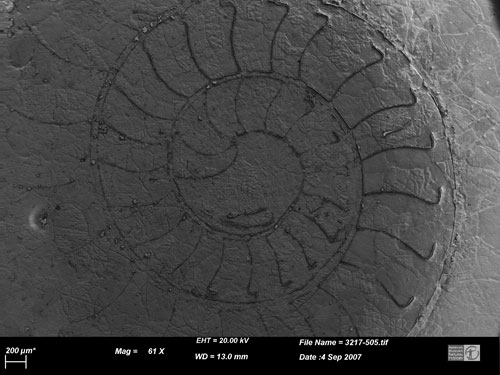
Some exceptionally well preserved specimens of Agoniatites vanuxemi from the middle Devonian Cherry Valley limestone of New York state, U.S.A.
Susan M. Klofak1,2, Neil H. Landman1.
1Division of Paleontology (Invertebrates), American Museum of Natural History, Central Park West at 79th St., New York, NY 10024., 2Department of Biology, City College of the City University of New York. 160 Convent Avenue, New York, New York 10031
Representatives of Agoniatites vanuxemi (Hall 1879) occur in discrete beds in the Cherry Valley Limestone (Middle Devonion of New York State, U.S.A. These beds are thought to represent mass mortality events of immigrant populations during times of transgression. The Seneca Stone Quarry preserves such a bed on the top surface of the quarry. After death, the agoniatites fell to the sea floor and were buried rapidly, but incompletely, leaving their topside exposed and subject to dissolution. The shells rested on their sides, which may have favored the preservation of the innermost whorls. By removing these inner whorls from the quarry floor it was possible to examine the internal structures of the juvenile whorls, including the ammonitella. The specimens were embedded in epoxy, ground and polished in a median section and etched with 5% HCL. The calcite in the specimens dissolved leaving the organic membranes and structures, which are preserved as pyrite. THe specimens were then examined with a scanning electron microscope. Two of the specimens exhibit remarkable preservation and are presented here.
Susan M. Klofak is a Senior Museum Preparator Technician at AMNH. Neil H. Landman is the Curator-in-Charge of Invertebrate Paleontology at AMNH.